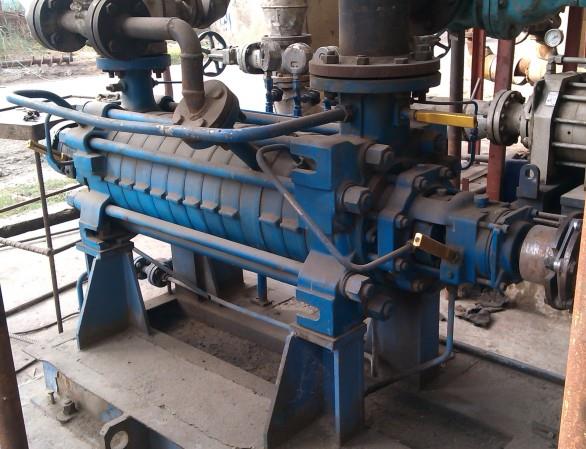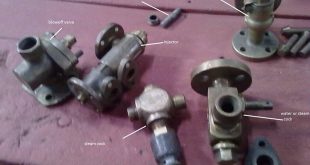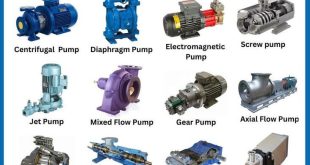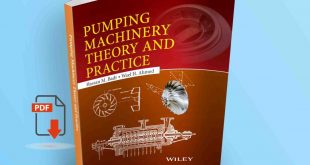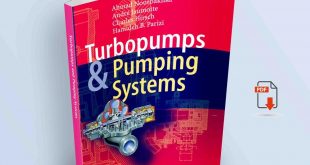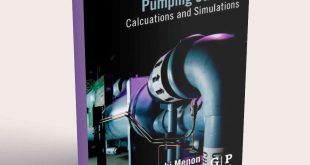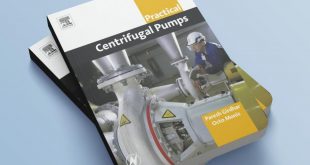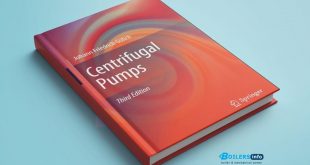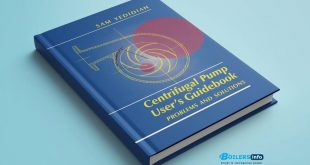Today we will discuss about (BFWP) boiler feed water pump working principle and operation of a boiler feed water pump. The boiler feed pump function is to supply pressurized feed water to the boilers to maintain the water inventory at various operating loads. Boiler feed water pumps are commonly centrifugal pumps. To ensure a high enough head and pressure, Boiler feed Pumps have been arranged in series (multistage pumps). A feedwater pump is most often driven by an electric motor for energy efficiency. Often two steam turbine-driven (turbo pump) and two electric feedwater pumps are used.
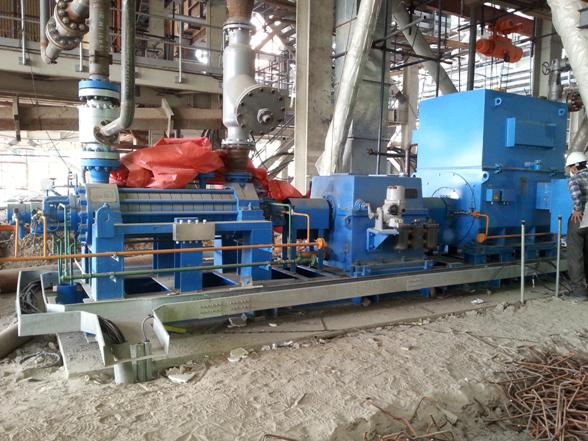
To ensure adequate feedwater flow a boiler must have at all times a slightly higher capacity for feedwater than for the steam generation capacity of the boiler. This pump is fitted with a mechanical seal or labyrinth glands to prevent leakage along the shaft and a balance piston to achieve hydraulic balance and a balancing line from the first stage to the last stage to accumulate the thrust in the feed water pump. The pump body consists of a double casing with a radially split inner casing held together with long bolts. Labyrinth glands or mechanical seals are fitted to prevent the leakage of hot feed water outwards along the shaft sleeves. Condensate from the condensate pump discharge is piped into the control portion of the gland where it is directed inward along the shaft to the balance chamber and then out again and back to the condenser. The pump utilizes fully shrouded impellers and volute casings The materials of the impellers, shaft, and volute passageways are stainless steel to reduce corrosion.
The feed water booster pump takes suction from the deaerator. The primary function of the booster pump is to deliver feedwater to the main feed pump at the required NPSH. The booster pumps are relatively low speed, low head, and have lower required NPSH. There is also a recirculation line originating the minimum flow valve of the pump discharge check valve and discharging into the deaerator storage tank.
Start-up of BFWP boiler feed water pump
Conditions required to start up the boiler feed pump unit:
(1) Feed water tank filled (to above minimum water level)
(2) The pump and pipings are fully primed and vented.
(3) Suction valve fully open
(4) Discharge valve closed
(5) Minimum flow shut-off valve open
(6) Cooling water system running
(7) Oil pump in operation.
(8) Differential temperature between top and bottom on barrel within 20°C
Pumps Start and Check:
(1) Oil supply pressure
(2) Pump suction pressure
(3) Pump discharge pressure
(4) The passing of the minimum flow
(5) Bearing temperature
(6) Shaft seal The seals should only show very small signs of leakage. Check its temperature.
(7)Check the oil flow rates at the lubricating points of the pump.
The shutdown of the feed water pump
(1) Close the discharge valve
(2) Switch off the driver and observe the pump run down smoothly to a standstill. The pump rotor should not stop with a sudden jerk.
(3) Switch off the oil pump.
(4) The suction valve should remain open unless the pump is being taken out of service for a prolonged period and is being drained.
Boiler feed water pump problems and solution
Some common problems with boiler-feed water pumps and their corresponding solutions are:
Boiler feed water pump problems:
- Impeller damage
- Seal leakage
- Bearing failure
- Cavitation
- Overheating
- Corrosion
Solutions:
- Impeller damaged: Regular inspection and maintenance, replacement of damaged impeller if necessary
- Seal leakage: Regular inspection, replacement of worn mechanical seals, proper installation and alignment of seals
- Bearing failure: Proper lubrication and maintenance, regular inspection, replacement of damaged bearings if necessary
- Cavitation: Proper pump design, installation, and operation, maintaining proper pump speed, reducing pressure drop in the suction line
- Overheating: Proper cooling systems (water or air), monitoring temperature regularly, ensuring the pump is not operating at excessive temperatures
- Corrosion: Use of corrosion-resistant materials in pump construction, regular inspection, and cleaning of the pump, and water treatment to reduce the corrosiveness of the water being pumped.
Related Topics:-
 Boilersinfo Boiler and Mechanical Power Digital Library
Boilersinfo Boiler and Mechanical Power Digital Library
